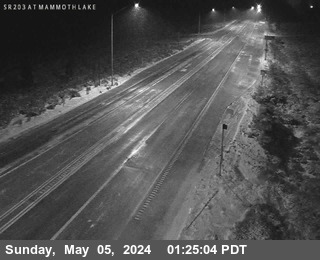Brought to you by Howard Sheckter
Archive for October, 2011
The Cooling is Here…..Good-Bye Early Summer Temps…..Start the Snow Guns Cliff!
Tuesday October 25, 2011
Although the October 6th Snowstorm of this year is just a memory…..the weather will certainly feel more Winter like the next few days. A storm gathering strength over the inter-mountain west is advecting a moderate shot of chilly air over our region. It will certainly be cold enough to make snow on Mammoth Mountain after midnight tonight and into Wednesday Night.
The chilly daytime temps will be short lived through. Rising heights beginning Thursday then into Sunday morning should bring more Fall like temps back into the Mammoth Region. With that said, there will be a lot of cold air still trapped into the valleys of Mono County. We are in that time of the year now that unless the winds blow through out the lower elevations of Mono County, there is not enough direct isolation (incoming solar radiation), due to the low angle of the Sun to convect enough heat to mix out the valleys. They will now have to rely upon mostly pressure gradient winds to allow the valleys to mix out. And……Going into December, it only gets worse.
A quick chat with Cliff Man of Mammoth MT this morning said that he may begin to make snow tonight or tomorrow, as soon as temps are favorable. Mammoth Mt is still hoping for a November 10th opening.
This weekends weather look beautiful with highs at resort levels in the low 60s by Saturday, then into Monday with no significant winds. Night time lows will be in the 20s and 30s……except for some of those chilly valleys which may still be in the upper teens.
Longer range and other thoughts……….
Just a quick mention that there are several short waves traveling across the pacific. Most of these will effect the Pacific northwest. However, the pattern does become split and so it is possible that a splitting system might come into California, over the next two weeks. The timing is impossible at this time. Optimistically, there only one wave now the Dweebs are watching. A wave about the end of the first week of November. If Mother Nature is good to us, the split will be in the right place allowing energy to move into California.
Scouring over many articles on the NET, the best explanation I can find for why we had such a monumental winter last year was due to the AO. “The Arctic Oscillation” The (AO) is an index. When the oscillation exhibits a “negative phase”, expect relatively high pressure over the polar region and low pressure at mid latitudes (about 45 to 37 degrees North). The more negative the index, the deeper the frigid air penetrates into the mid latitudes. Usually, the index remains in the negative phase for only a short period of time. Last winter it was much more frequent, longer lasting and reached negative levels unusually low. This resulted in both atmospheric blocking and most importantly, the suppression of the polar jet to areas that do not usually experience the jet with the persistence and strength that occurs during a La Nina Winter. As an example, for an area like San Diego, Ca to have that much rain during a La Nina Winter could possibly be an event of occurrence in over 50+ years. So the La Nina Winter of 2010 in the Dweebs estimation was extremely A-typical and not likely to occur again this winter.
Quoting Bill Patzert in an article on the Net, who is a research oceanographer and long-range forecaster at the Jet Propulsion Laboratory in Pasadena. ….“The AO is the wild card” for this year. Meaning that Southern California will only have another wet winter if the AO goes strongly negative again. According to Bill Patzert, . “When the -AO gets this strong, it definitely trumps La Niña effects in the mid latitudes of the Northern Hemisphere.”
As a point the Dweebs want to make. La Nina Winters usually bring dryer winters to Southern Ca and equal chances of a normal winter to Central California. So what we would expect for Mammoth would be possibly an average winters worth of precipitation. That is *354.3 inches of snow on Mammoth Mountain. That is a good winter! The Dweebs are hoping for more!
Are you locals still dreaming about that 1000 inch winter rumor? 😉
*According to tabulated data from ski patrol since 1970.
————————————————-
Reference Glossary of Weather Terms
Disclaimer: I have been a hobbyist meteorologist for over 30 years here in the Mammoth area and I do this for my personal enjoyment. The National Weather Service saves lives every day . . . I do not. When making important planning decisions please use information provided by the National Weather Service as they are the most knowledgeable and accurate information source available today.




